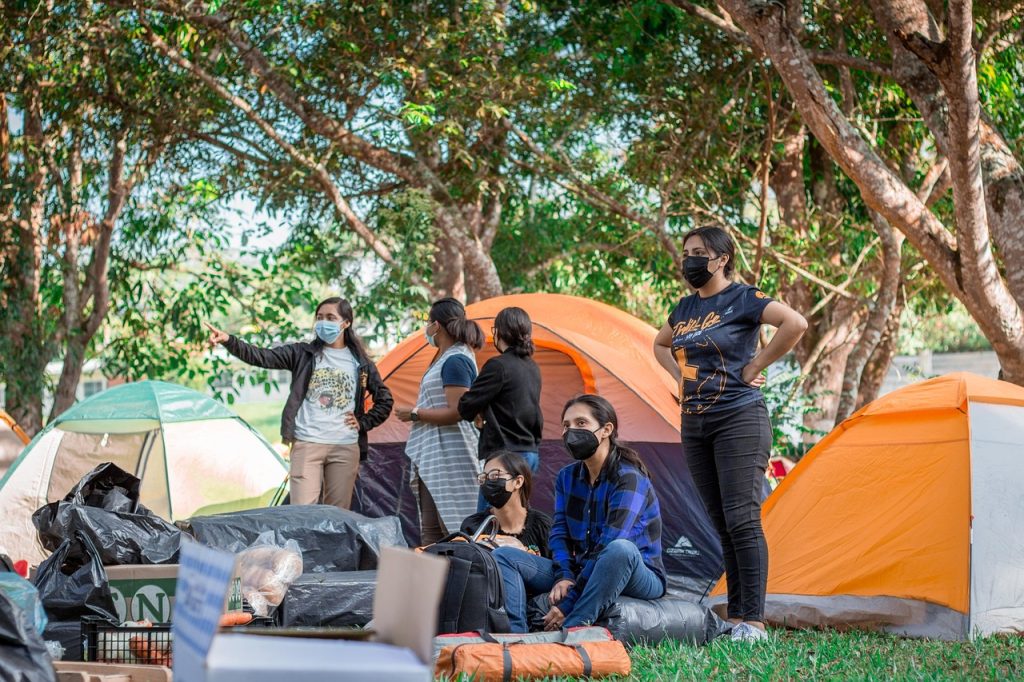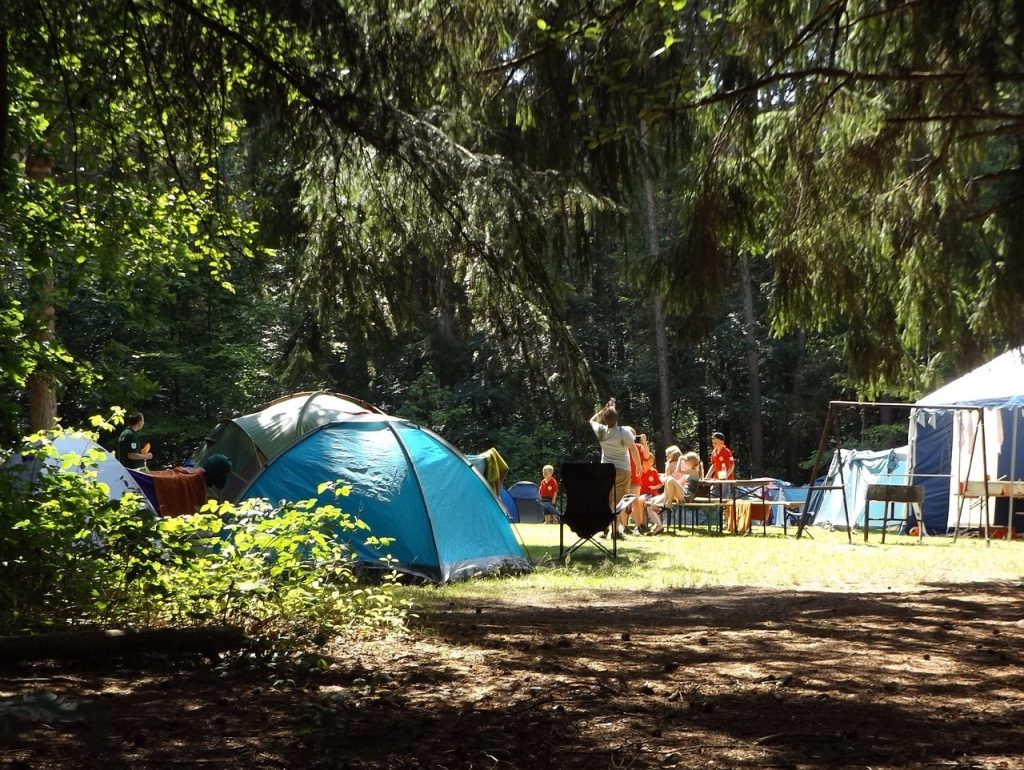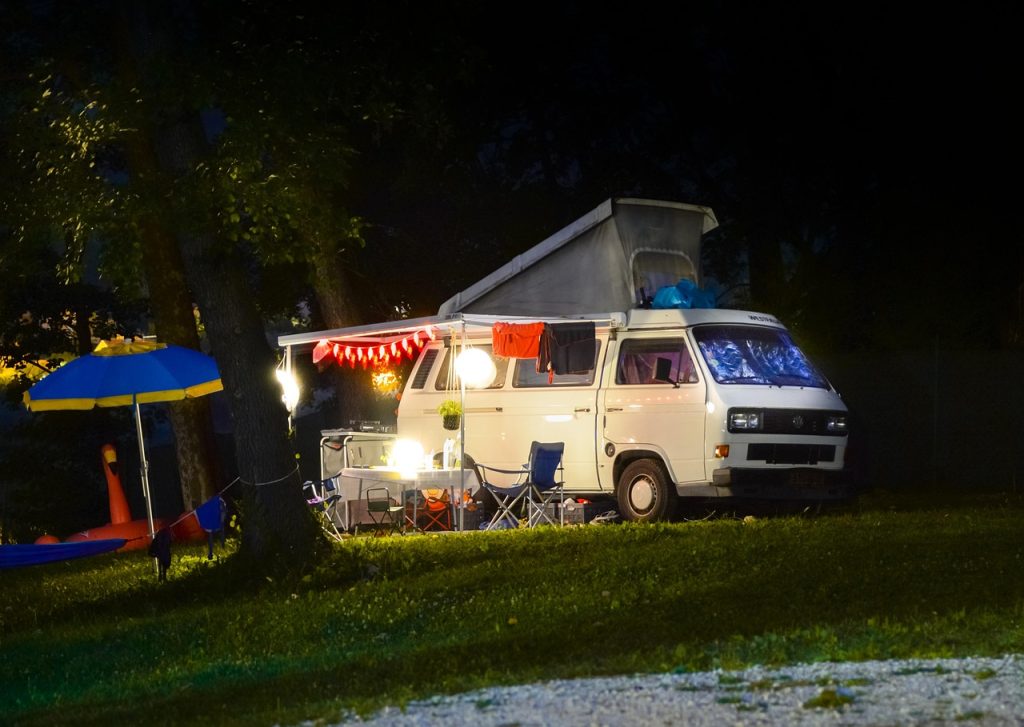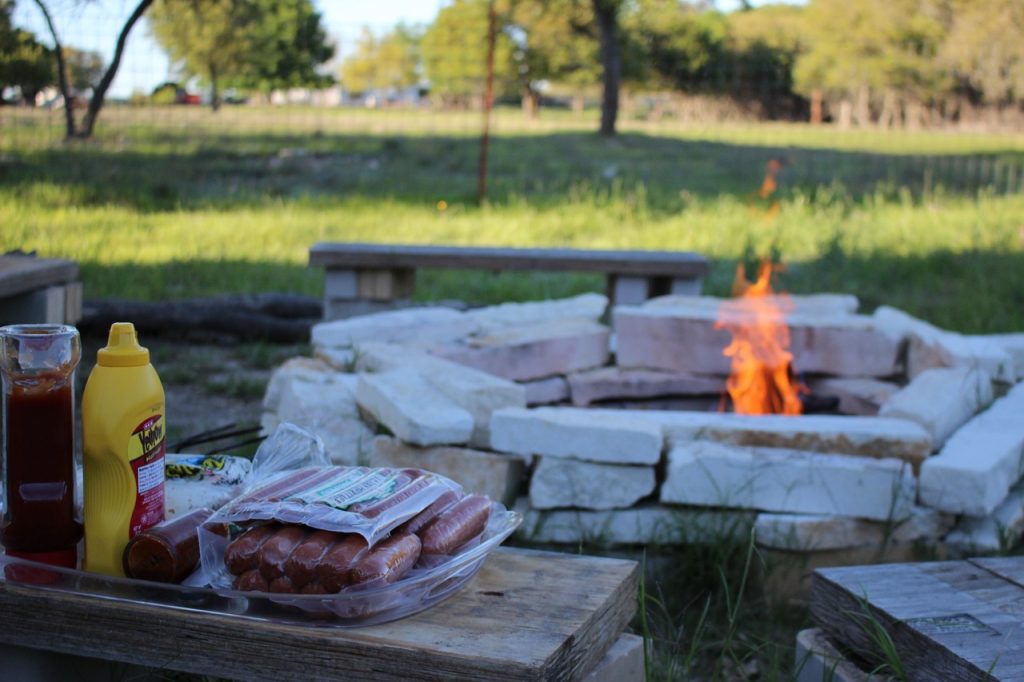Summer is a time of warmth, freedom, and endless possibilities. For many families, it’s the perfect season to create lasting memories together without the need for expensive trips or elaborate plans. One of the most rewarding ways to spend this time is by turning your backyard into a summer camp. This idea not only offers fun and adventure but also encourages creativity, teamwork, and learning in a natural setting. Whether you have a sprawling yard or just a small patch of grass, the magic of summer can be brought home with a little imagination and effort.
The concept of a backyard summer camp is simple yet powerful: transform your outdoor space into a mini-campsite where kids (and adults) can explore, play, and grow. It’s a chance to disconnect from screens and reconnect with nature, family, and each other. From building forts to stargazing, the activities are as diverse as they are enriching. What makes this idea so special is its accessibility—no fancy equipment or professional staff required. All you need is a bit of enthusiasm and a willingness to get creative.
This blog post is designed to inspire and guide you through creating an unforgettable backyard summer camp experience. We’ll explore a variety of ideas that cater to different ages, interests, and skill levels. Whether you’re looking for physical activities, educational projects, or relaxing moments under the sun, there’s something here for everyone. The goal is to help you make the most of your summer while fostering joy, learning, and bonding within your family. Let’s dive into some exciting and practical ideas that will turn your backyard into a haven of summer fun.

1. Setting Up the Campsite
Creating a welcoming and functional campsite is the first step in making your backyard summer camp feel like a real adventure. Start by choosing a safe and accessible area in your yard. If possible, pick a spot with shade from trees or a canopy, especially during the hottest parts of the day. Clear any debris or sharp objects to ensure safety for all campers. You might want to define the boundaries of your camp using ropes, flags, or even chalk on the ground to give it a sense of structure.
Next, set up a central hub for your camp. This could be a picnic table or a blanket-covered area where meals, games, and crafts take place. Add some cozy touches like pillows, blankets, and string lights to create a warm and inviting atmosphere. A makeshift “campfire” made from rocks or a fire pit (if allowed in your area) can serve as the heart of your camp, where stories are told and songs are sung. Don’t forget to bring out some camping essentials like a lantern, compass, and maybe even a portable radio for music or weather updates. These small details can go a long way in making the experience feel authentic and exciting.
2. Tent Building and Sleeping Under the Stars
One of the most iconic elements of a summer camp is sleeping in a tent. Setting up a tent in your backyard gives children a sense of adventure and independence. If you don’t own a tent, you can use tarps, sheets, or even branches to build a simple shelter. Involve the kids in the process—let them choose the design, help with the construction, and decorate the inside with drawings, fairy lights, or stuffed animals. This hands-on activity teaches problem-solving, teamwork, and spatial awareness.
Once the tents are up, encourage the whole family to sleep outside at least one night. Use air mattresses or sleeping bags to make it comfortable. Before bed, read a story or share campfire tales to wind down. In the morning, wake up naturally to birdsong and sunlight filtering through the trees. This experience not only fosters a connection with nature but also helps children appreciate the simplicity and beauty of the outdoors. Plus, it’s a great opportunity to talk about constellations, wildlife, and the changing seasons.
3. Nature Exploration and Scavenger Hunts
Exploring the natural world is a fantastic way to learn and have fun at the same time. Organize a scavenger hunt around your backyard or nearby park to encourage observation and discovery. Create a list of items to find, such as specific types of leaves, flowers, insects, or rocks. You can also include challenges like identifying bird calls or tracking animal footprints. Provide magnifying glasses, notebooks, and pencils for closer inspection and recording findings.
To make it more engaging, divide the group into teams and offer small prizes for the winners. This adds a competitive edge while promoting cooperation and communication. After the hunt, gather everyone to share their discoveries and discuss what they learned. This activity not only sparks curiosity but also introduces basic concepts of biology, ecology, and environmental science in a playful way. Best of all, it gets everyone moving and exploring, which is essential for physical health and mental well-being.

4. Outdoor Games and Sports
Physical activity is a key component of any summer camp, and your backyard is the perfect place to host a variety of games and sports. Set up a mini-Olympics with events like sack races, three-legged races, and tug-of-war. You can also organize traditional games like capture the flag, tag, or relay races. If you have access to balls, frisbees, or hula hoops, incorporate those into the mix for added fun.
For younger children, consider simpler activities like bubble blowing, obstacle courses, or water balloon fights. These games promote gross motor skills, coordination, and social interaction. Make sure to provide plenty of water and breaks in the shade to keep everyone hydrated and comfortable. Outdoor games not only burn off energy but also teach important life skills like sportsmanship, teamwork, and perseverance. Plus, they’re a great way to end the day with laughter and excitement.
5. Cooking and Camping Meals
One of the highlights of any camp experience is cooking over a fire or grill. Even if you can’t have a real campfire, you can still enjoy the fun of preparing meals in the great outdoors. Plan a menu that includes easy-to-make dishes like hot dogs, s’mores, grilled corn, or veggie skewers. Use a portable grill, charcoal grill, or even a camping stove to cook your meals. Involve the kids in the preparation—let them help with washing vegetables, assembling ingredients, or stirring the pot.
Make it a full experience by setting up a picnic-style meal with mismatched plates, paper cups, and cloth napkins. Encourage storytelling or sharing favorite memories while you eat. This not only makes the meal more enjoyable but also strengthens family bonds. Cooking together teaches valuable life skills like following recipes, measuring ingredients, and cleaning up afterward. It’s also a great opportunity to introduce new foods and talk about nutrition in a relaxed and fun environment.
6. Arts and Crafts Projects
Creativity thrives in the open air, and a backyard summer camp is the perfect setting for arts and crafts. Gather materials like paint, markers, glue, and recycled items to make decorations, toys, or keepsakes. Try painting stones, making leaf prints, or constructing bird feeders from pinecones and twine. You can also create personalized name tags, friendship bracelets, or even a camp banner to hang above your site.
These activities allow children to express themselves and develop fine motor skills. They also foster patience, attention to detail, and a sense of accomplishment. To keep things interesting, rotate the types of projects each day or let the kids vote on what they’d like to make next. Display their creations proudly around the campsite or at home as a reminder of their summer adventures. Arts and crafts are not only fun but also therapeutic, helping to reduce stress and boost confidence.
7. Stargazing and Nighttime Activities
As the sun sets, the magic of the night sky begins to unfold. Stargazing is a wonderful way to cap off a day at the camp. Lay out blankets and pillows on the grass, and point out constellations, planets, and the Milky Way. Use a star map app or a printed chart to help identify celestial objects. Share myths and stories about the stars to spark imagination and wonder.
You can also add some nighttime activities like ghost stories, shadow puppets, or a moonlight hike. Bring along flashlights or glow sticks for added visual effects. If you have a telescope or binoculars, use them to get a closer look at the stars and the moon. This experience not only deepens appreciation for the universe but also encourages scientific curiosity and awe for the natural world. Ending the day with a peaceful moment under the stars creates a sense of closure and reflection.
8. Educational Workshops and Learning Moments
A backyard summer camp doesn’t have to be all play—it can also be a time for learning and growth. Organize mini-workshops or lessons on topics like gardening, weather, or basic survival skills. Teach the kids how to plant a flower garden, track the weather using simple tools, or start a fire with a match or lighter. These activities blend education with hands-on experience, making learning more engaging and memorable.
You can also invite local experts like a librarian, a gardener, or a scout leader to join in for a special session. Or, if you prefer to keep it low-key, use books, videos, or online resources to guide your lessons. The key is to make learning interactive and fun. Whether it’s identifying plants, building a bug house, or experimenting with homemade slime, these workshops help children develop critical thinking, problem-solving, and observational skills. They also show that learning can happen anywhere—even in your own backyard.

9. Water Play and Cool-Down Activities
On hot summer days, nothing beats the thrill of water play. Set up a sprinkler, fill a kiddie pool, or lay out a slip-and-slide for hours of refreshing fun. Water balloons, buckets, and paddles can turn a simple splash zone into an action-packed water war. If you live near a lake or river, consider a short trip for swimming or wading in shallow areas. Always prioritize safety by supervising closely and ensuring everyone stays hydrated.
Water activities are not only cooling but also excellent for physical development. Splashing around builds strength, balance, and coordination. They also encourage social interaction and cooperative play. To add variety, try different water-based games like floating races, sponge ball tosses, or water balloon volleyball. These activities are perfect for winding down after a day of exploration and adventure. Just remember to pack extra clothes and towels for everyone!
10. Family Traditions and Special Events
Creating traditions is a beautiful way to make your backyard summer camp meaningful and memorable. Establish a daily routine with morning greetings, afternoon check-ins, and evening reflections. You can also plan special events like a talent show, a themed day (e.g., pirate day or superhero day), or a camp-wide challenge. These traditions help build a sense of community and continuity throughout the summer.
Another idea is to create a memory book or scrapbook where the family can record their experiences. Include photos, drawings, and written notes about each day’s activities. This becomes a cherished keepsake that you can look back on for years to come. You can also hold a closing ceremony at the end of the camp to celebrate achievements and say goodbye to the summer. Whether it’s a bonfire, a picnic, or a simple toast with lemonade, these moments help reinforce the value of family, friendship, and shared experiences.
11. Safety and Practical Tips
While the goal of a backyard summer camp is to have fun, it’s important to prioritize safety and practicality. Start by checking the weather forecast and planning activities accordingly. Avoid scheduling strenuous activities during peak heat hours and always provide shade, water, and sunscreen. Keep a first-aid kit handy for minor injuries and know the location of the nearest hospital or clinic.
Also, establish clear rules and boundaries for all campers. Teach children about personal space, respectful behavior, and emergency procedures. If you’re hosting guests, make sure to communicate expectations and guidelines in advance. Lastly, be flexible and ready to adapt if things don’t go as planned. Sometimes the best memories come from unexpected moments and spontaneous changes. By staying organized and proactive, you can ensure a smooth and enjoyable experience for everyone involved.
12. Encouraging Independence and Responsibility
A backyard summer camp is a great opportunity to nurture independence and responsibility in children. Assign age-appropriate tasks like setting up chairs, packing supplies, or cleaning up after meals. This teaches accountability and helps kids feel valued and capable. Encourage them to make choices, solve problems, and take initiative in their activities.
You can also create a system of rewards or recognition to motivate and acknowledge their efforts. For example, give out badges or certificates for completing challenges or demonstrating good behavior. This not only boosts self-esteem but also reinforces positive habits. As parents, it’s important to step back and let children lead when possible. This builds confidence and prepares them for future challenges. Remember, the goal is to create an environment where kids can grow, learn, and thrive through hands-on experiences.

13. Connecting with Nature and Sustainability
Incorporating sustainability into your backyard summer camp is a meaningful way to connect with nature and teach eco-friendly values. Start by using reusable containers, avoiding single-use plastics, and recycling whenever possible. Encourage composting food scraps and planting native flowers or herbs to support local wildlife. These small actions help reduce waste and promote environmental stewardship.
You can also include lessons on conservation, such as discussing the importance of clean water, protecting habitats, and reducing carbon footprints. Take the time to observe and respect the natural world around you—avoid disturbing wildlife, stay on trails, and leave no trace behind. By modeling sustainable behaviors, you instill a lifelong appreciation for the planet in your children. This aspect of your camp not only enriches the experience but also empowers the next generation to care for the Earth.
14. Making Memories and Strengthening Bonds
At the heart of every backyard summer camp is the opportunity to create lasting memories and strengthen family bonds. Spending quality time together in a relaxed and joyful setting allows relationships to flourish. Whether it’s laughing over a silly game, working together on a project, or simply enjoying the peace of the evening, these moments become treasured chapters in your family’s story.
The beauty of a backyard summer camp lies in its flexibility and personalization. There’s no right or wrong way to do it—just the way that feels right for your family. Embrace the messiness, the spontaneity, and the imperfections. These are the very things that make the experience unique and meaningful. By focusing on connection, creativity, and fun, you’re not just spending a summer—you’re building a foundation of love, trust, and shared joy that will last a lifetime.
15. Inspiring Future Adventures
Finally, a backyard summer camp can serve as a springboard for future adventures and lifelong hobbies. Many childhood memories are sparked by a simple activity that turns into a passion later in life. Whether it’s a love for hiking, crafting, or stargazing, these early experiences shape who we become. Use this time to discover what excites and inspires each member of your family.
Consider keeping a journal or log of your summer camp activities. Note what worked well, what didn’t, and what you’d like to try again next year. This helps you refine and improve the experience over time. You can also collect mementos like photographs, drawings, and collected items in a memory box. These artifacts become tangible reminders of the joy and growth that happened during the summer out.
Conclusion
A backyard summer camp is more than just a series of activities—it’s a celebration of togetherness, creativity, and the joy of being outdoors. Through simple yet meaningful experiences, families can bond, learn, and grow while making memories that will last a lifetime. Whether it’s building a fort, stargazing, or playing a game of tag, each moment contributes to a rich and fulfilling summer.
The beauty of this approach is its adaptability. Every family can tailor their camp to suit their preferences, needs, and resources. What matters most is the intention to connect and have fun. By stepping away from technology and immersing yourselves in the wonders of the natural world, you open the door to countless opportunities for discovery and joy.
So, as the sun rises on another summer, consider transforming your backyard into a campsite filled with adventure, learning, and laughter. With a little planning and a lot of heart, you can create an experience that brings your family closer and leaves a lasting impact. Let the spirit of summer ignite your imagination and guide you toward a season of unforgettable moments.
